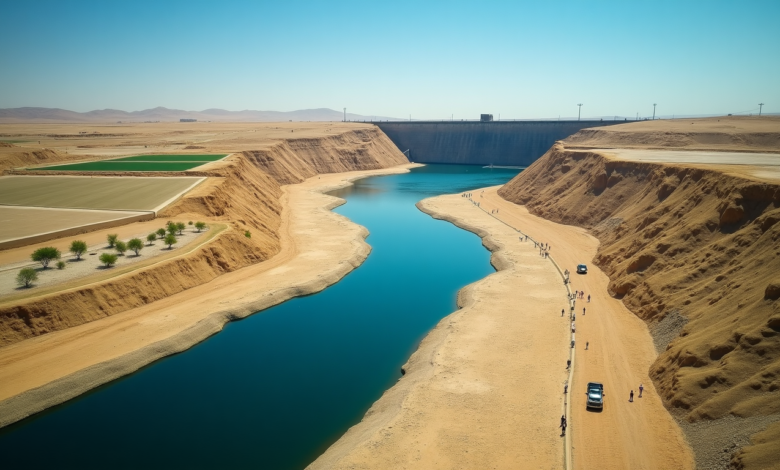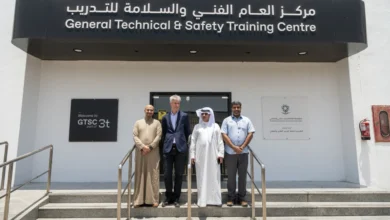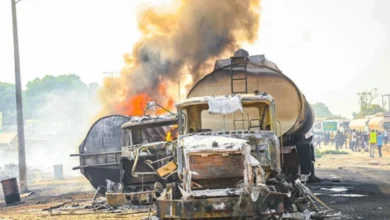
The Politics of Water Scarcity: Global Cooperation Amidst Resource Depletion
More than 2 billion people worldwide face water shortages, which has become one of our biggest challenges in the 21st century. Nations compete fiercely for diminishing water resources, especially when rivers and aquifers cross international borders. Water has evolved from a simple resource into a powerful political tool that shapes international relations and regional stability.
Climate change, water pollution, and growing population needs create intense pressure on shared water resources. Countries struggle to secure their water supplies, making effective water resource management crucial. This piece delves into why water shortages happen, notable cases of cross-border water conflicts, current cooperative frameworks, and economical solutions to ensure future water security.
The Global Water Crisis: Causes and Consequences
A global water crisis emerges from environmental, demographic, and infrastructural challenges. Climate change leads to worldwide water lack by changing rainfall patterns and affecting water availability.
Climate change impacts on water availability
Global temperatures continue to rise and reshape how we access water worldwide. A 20% decline in renewable water resources occurs with each 1°C rise in average global temperature. These changes show up as severe droughts, especially in subtropical regions like Australia and North Africa. The same changes trigger devastating floods that make freshwater sources unsafe. Scientists have discovered that aquifer groundwater, which provides 36% of the world’s domestic water, has become more vulnerable to climate change.
Population growth and increased water demand
Water resources face mounting pressure as the world’s population continues to grow. Experts predict that annual water requirements will reach 5,500 to 6,000 cubic kilometers by 2050, a 20-30% increase from current levels. This pressure continues to demonstrate through:
- Agriculture uses 70% of all freshwater withdrawals
- Africa’s industrial water needs will surge by 800% while Asia will see a 250% increase
- Developing regions will see their domestic water consumption triple
Uneven distribution of water resources
Earth’s freshwater shows dramatic geographical differences across regions. Our planet seems rich in water, yet only 0.5% of Earth’s water exists as available freshwater. Several regions hold major concentrations of renewable water resources:
- The Amazon and Orinoco Basins (15% of global runoff)
- South and Southeast Asia (18% of global runoff)
- Canada (over 10% of world’s river water)
Arid regions face unique challenges due to water lack that complicates resource management. Climate change and population growth create additional pressure on stressed water systems. These challenges become more severe in developing nations where limited infrastructure makes water access difficult.
Transboundary Water Conflicts: Flashpoints and Tensions
Nations worldwide face growing tensions over water resources that cross their borders, including 300 major river basins. These vital water sources spark regional conflicts between countries. The competition for these dwindling resources intensifies as climate change progresses and populations expand.
Case studies of water disputes between nations
The Nile Basin shows how complex water conflicts can become between countries, especially with Ethiopia’s Grand Ethiopian Renaissance Dam that created tensions with Egypt. This conflict reached new heights in 2020 when Ethiopian Prime Minister declared that “no force can stop Ethiopia from building the dam.” Egypt sees this project as a direct threat to its survival because of water security concerns.
China’s dam construction on the Mekong River represents another crucial example of water disputes. These upstream projects have changed water patterns that directly affect Vietnam, Laos, Cambodia, and Thailand. The case clearly shows how development projects in upstream regions can harm downstream communities and their ecosystems.
Upstream vs downstream power dynamics
Water resource management creates natural power imbalances between upstream and downstream nations. Several factors shape these complex relationships:
- Upstream nations hold geographical advantages that let them control water flow
- Downstream countries face limited options for legal action
- Water allocation depends on complex riparian rights
- Nations struggle between historical water usage claims and geographical sovereignty
Water as a tool for political leverage
Countries now use water resources to exert political pressure. Several examples show how water becomes a weapon:
- Strategic dam construction that affects downstream water flow
- Water supply manipulation during conflicts
- Water access that serves as a bargaining tool in broader diplomatic negotiations
The India-Pakistan water dispute over the Indus Waters Treaty demonstrates this reality. Water management decisions blend with broader geopolitical tensions in the region. While the treaty has survived three wars, it faces continuous pressure. India’s upstream position gives it considerable influence in regional politics.
Cooperative Frameworks for Water Governance
Managing shared water resources needs reliable international frameworks and institutions. Cooperative mechanisms have evolved by a lot in the last decades. These mechanisms created a complex network of legal agreements and organizational structures that prevent and resolve water-related conflicts.
International water laws and agreements
Two main international conventions form the backbone of transboundary water governance: the UN Watercourses Convention and the Water Convention. These frameworks establish essential principles to manage water resources:
- Fair and reasonable usage
- Prevention of major harm
- Obligation to collaborate and exchange data
- Preservation of ecological systems
- Peaceful resolution of disputes
River basin organizations and joint management
River Basin Organizations (RBOs) play a vital role as institutions that coordinate stakeholder actions and promote cooperation. RBO’s success depends on these main characteristics:
- Legal framework and mandate scope
- Organizational structure and decision-making processes
- Data sharing and monitoring capabilities
- Financial resources and sustainability
Member states’ representatives meet through governance bodies to make decisions about resource usage, development, and protection.
Water diplomacy and conflict resolution mechanisms
Water diplomacy is a vital tool that prevents and resolves water-related disputes. Diplomatic instruments work better than technical solutions to address disagreements over shared water resources. The process involves:
| Diplomatic Tool | Primary Function |
|---|---|
| Negotiations | Direct conflict resolution |
| Consultation platforms | Stakeholder engagement |
| Joint fact-finding | Data-based decision making |
| Dispute resolution mechanisms | Formal conflict management |
Cooperative frameworks showed that effective water governance needs both formal institutional structures and flexible diplomatic approaches. The success of these initiatives depends on participating states’ commitment to maintain dialog and pursue mutual benefits through shared water resource management.
The Future of Water Security: Challenges and Opportunities
Technology and strategic planning transform global water security approaches today. Nations and organizations develop sophisticated solutions because water resources face mounting pressure worldwide.
Technological solutions for water lack
Modern digital technologies are changing how we manage water resources. Scientists initially created satellite imagery to find water on other planets, and now we use it to spot pipeline leaks on Earth. Artificial intelligence combined with current infrastructure shows impressive results:
| Technology | Application | Effect |
|---|---|---|
| AI Analytics | Leak Detection | Reduces water loss by up to 30% |
| Cloud Computing | Network Monitoring | Streamlines distribution |
| Smart Meters | Usage Tracking | Provides immediate management |
Building resilience to climate change
Water infrastructure needs systematic adaptation strategies to combat climate change. VA SYD, a Swedish utility company, demonstrates this through its AI-driven leak detection systems that target climate neutrality by 2030. The modernized infrastructure emphasizes:
- Advanced monitoring systems that provide early warnings
- Flexible storage solutions that adapt to changing conditions
- Renewable energy systems integrated with water treatment
Promoting equitable and sustainable water use
Modern water management just needs technological innovation alongside policy reform. Denmark shows how regulations can optimize water usage through their 10% leakage threshold penalty. Water infrastructure improvements will cost around USD 6.70 trillion by 2030.
The World Bank’s 2030 Water Resources Group shows how mutually beneficial alliances between public and private sectors enhance water security. Their projects have secured USD 450 million in public funding and USD 100 million in private investments to manage water pollution in Bangladesh.
Digital transformation helps the water sector become more efficient. Operators can spot problems faster with cloud computing and hydraulic simulations. Resource allocation improves through integrated management systems. These technological advances combined with beneficial partnerships and policy reforms create the foundation for future water security.
The lack of water is a complex challenge that surpasses national boundaries and needs global attention. Climate change effects, population pressures, and geopolitical tensions have reshaped water management into a key diplomatic priority. Nations’ political relationships now depend on shared water resources. Current governance systems don’t deal very well with the growing pressures on water systems that cross borders.
Technology advances and cooperation mechanisms show promising ways to achieve eco-friendly water management, though major challenges exist. Smart infrastructure, artificial intelligence, and innovative policy frameworks show how balanced solutions can serve both upstream and downstream nations. Global water security success relies on international teamwork, technology implementation, and steadfast dedication to fair resource distribution across borders.







[…] necessities like shelter and clean water remain […]